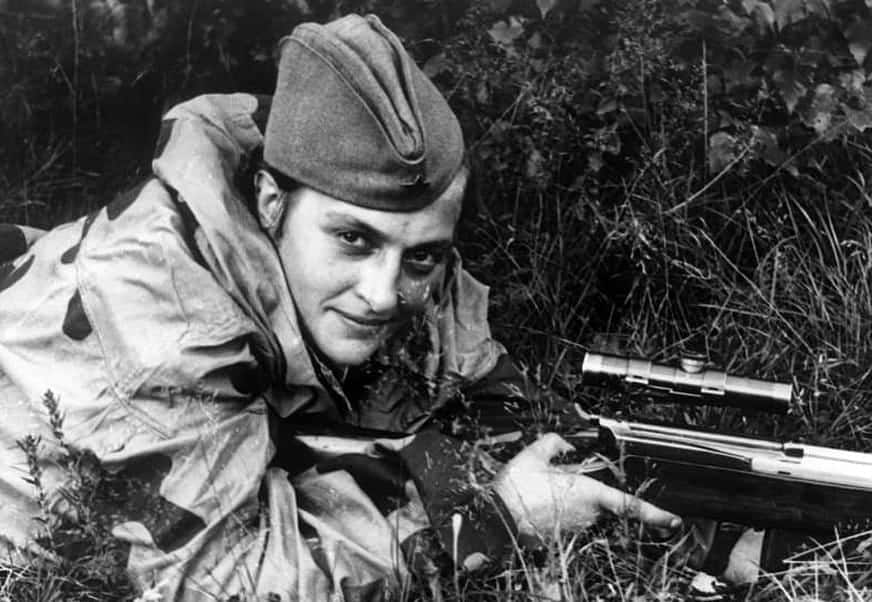One of the most successful snipers in history is indeed a woman. Liudmyla Mykhailivna Pavlichenko was a Red Army Ukrainian sniper during World War II. She is credited with 309 kills, which makes her one of the top snipers in history. Pavlichenko first developed sharp-shooter skills when she moved with her family to Kiev and joined a sharpshooter club at the age of fourteen. In 1937, she earned a master’s degree in history.
Pavlichenko was in her fourth year studying history when the war hit in 1941, and Germany invaded Russia. Pavlichenko joined up and requested to be a part of the infantry. “I joined the army when women were not yet accepted, she said.” In fact, she had to prove herself to join after she refused to serve as a nurse. They handed her a rifle and pointed her in the direction of several Romanians they knew to be working with the Germans.

She shot them both dead and was accepted to serve as a sniper. Casualties on the front lines were high, out of 2,000 female snipers only 500 survived the war. Pavlichenko made her first official kill with a semi-automatic rifle near Belyayevka.
Private Pavlichenko fought for about two and a half months near Odessa, and it was there that she recorded 187 kills. Her unit was then sent to Sevastopol and she fought for eight more months. She eventually clocked 257 kills of German soldiers. Her total kills during World War II eventually totaled 309, including 36 enemy snipers. Pavlichenko was eventually taken out of service after she was wounded by mortar fire.
She mainly was taken out of commission due to her rising fame and reputation for being such a good sniper. “By that time even the Germans knew of me,” she said. They attempted to bribe her, blaring messages over their radio loudspeakers. “Lyudmila Pavlichenko, come over to us. We will give you plenty of chocolate and make you a German officer.” When bribery didn’t work they threatened to tear her into 309 pieces. Pavlichenko loved that the Germans knew her score.
Pavlichenko then toured the U.S. and Canada and she became the first Soviet citizen to be received by a President. Eleanor Roosevelt sent her on a tour of the U.S. recounting her experiences as a woman in combat. Pavlichenko spoke no English at the time and her mission was to drum up American support for a second front in Europe to take on the Germans.

